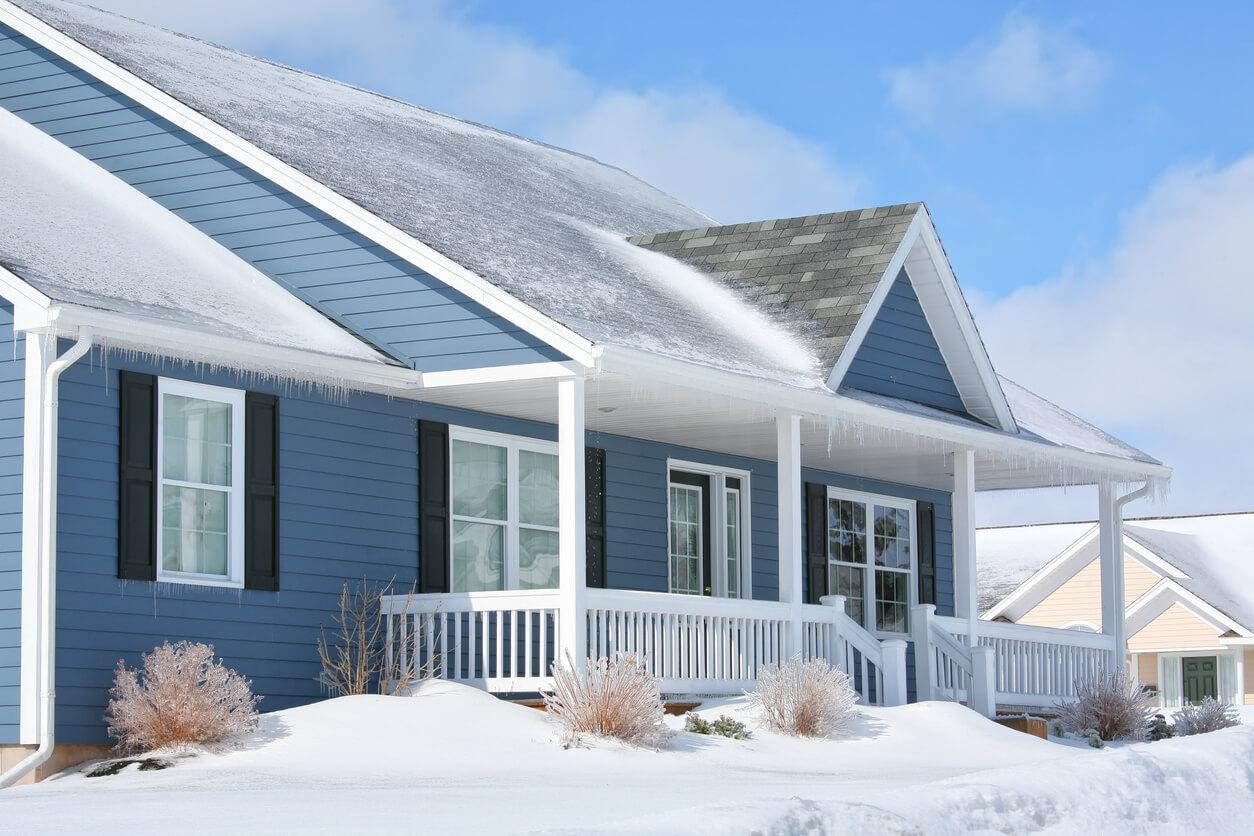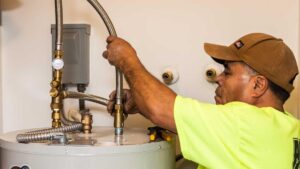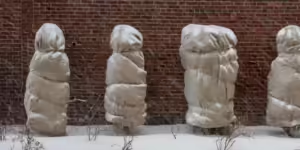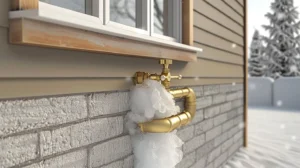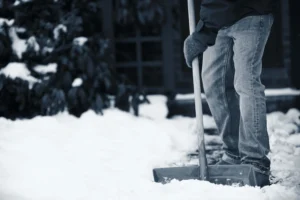As the winter season approaches, it’s important to prepare your home’s exterior to withstand colder temperatures, snow, and ice. Winterizing your home’s exterior not only helps protect it from damage but also increases energy efficiency, potentially lowering your heating costs. To ensure your home is ready to handle the harsh elements of winter, here are five essential steps for winterizing your home’s exterior.
1. Inspect and Seal Gaps Around Windows and Doors
Cold air can easily enter your home through gaps and cracks around windows and doors, making your heating system work harder and driving up your energy bills. One of the easiest ways to winterize your home’s exterior is to inspect and seal any gaps or cracks that could let in drafts.
- How to do it:
- Inspect the exterior: Walk around the exterior of your home and look for any gaps around window and door frames, siding, and where different materials meet, like brick and wood. Even small cracks can let in cold air.
- Use caulk or weatherstripping: Apply exterior-grade caulk to seal small cracks around windows and doors. For larger gaps, install weatherstripping around door frames to create a tight seal when the door is closed. Replace any old or damaged weatherstripping that no longer provides a proper seal.
- Why it’s important: Sealing gaps around windows and doors can prevent drafts, improve energy efficiency, and make your home more comfortable during the winter months. It also keeps out moisture, which can cause wood rot and other damage over time.
2. Protect Your Pipes and Faucets
Frozen pipes can lead to expensive repairs if they burst during the winter. Protecting your exterior pipes and faucets is a crucial step in preventing freezing and ensuring a continuous water supply during the colder months.
- How to do it:
- Drain and disconnect garden hoses: Remove any garden hoses attached to outdoor faucets. Drain the hoses and store them in a dry place for the winter.
- Install faucet covers: Place insulated faucet covers over outdoor spigots to protect them from freezing temperatures. These inexpensive covers help insulate the faucets from the cold.
- Insulate exposed pipes: If you have any exposed pipes along the exterior of your home or in unheated areas like garages or crawl spaces, insulate them with foam pipe insulation. This will help prevent them from freezing.
- Why it’s important: Frozen pipes can burst, leading to costly water damage and emergency repairs. Insulating pipes and faucets is a simple step that can save you from major headaches and expenses during winter.
3. Clean and Inspect Gutters and Downspouts
Clogged gutters can cause water to back up and freeze, leading to ice dams, which can damage your roof, siding, and foundation. Keeping your gutters and downspouts clean and in good condition is essential for proper drainage during winter storms.
- How to do it:
- Remove debris: Clean out leaves, twigs, and other debris from your gutters to ensure water can flow freely. If left clogged, water can freeze, creating ice dams that damage your home’s exterior.
- Check downspouts: Make sure your downspouts are clear and direct water away from the foundation of your home. Consider adding extensions to the downspouts to prevent water from pooling near the base of your home.
- Inspect for damage: Look for any cracks, holes, or sagging in your gutters and repair them as needed. Properly functioning gutters help prevent water from damaging your roof and siding.
- Why it’s important: Clean and functioning gutters prevent ice dams from forming, which can lead to roof damage, leaks, and foundation problems. Proper drainage is crucial for protecting your home during winter storms.
4. Check and Maintain Your Roof
Your roof is your home’s first line of defense against winter weather, so it’s essential to ensure it’s in good condition before the snow and ice arrive. A damaged roof can lead to leaks, water damage, and expensive repairs during the winter.
- How to do it:
- Inspect for damage: Look for missing, cracked, or loose shingles that could allow water to seep into your home. Replace any damaged shingles to prevent leaks.
- Clean the roof: Remove leaves, branches, and other debris from your roof, as they can trap moisture and contribute to mold growth or roof damage.
- Check the flashing: Inspect the flashing around chimneys, vents, and skylights for cracks or gaps. Flashing helps prevent water from seeping into your home, so it’s important to repair any damage before winter.
- Trim overhanging branches: Snow and ice can weigh down tree branches, causing them to break and potentially damage your roof. Trim back any overhanging branches to reduce this risk.
- Why it’s important: A well-maintained roof helps protect your home from leaks and water damage during winter storms. Addressing roof issues before winter hits can save you from costly repairs later on.
5. Winterize Your Outdoor Spaces
Don’t forget to protect your outdoor furniture, decks, and other exterior features from the harsh winter weather. Properly winterizing these areas will help extend their lifespan and ensure they’re ready to use when warmer weather returns.
- How to do it:
- Store outdoor furniture: Clean and store outdoor furniture in a garage, shed, or covered area to protect it from snow, ice, and freezing temperatures. If storing indoors isn’t an option, cover furniture with weatherproof covers to shield it from the elements.
- Protect your deck: Sweep off leaves and debris from your deck to prevent moisture buildup. Consider applying a weatherproof sealant to wood decks to protect them from snow and ice damage.
- Shut down irrigation systems: If you have an irrigation system, drain the water from the pipes and sprinkler heads to prevent freezing and damage. Shut off the water supply to the system, and use compressed air to blow out any remaining water.
- Why it’s important: Properly winterizing your outdoor spaces ensures they stay in good condition through the winter months. Taking these steps helps prevent damage and keeps your outdoor features looking fresh and functional when spring arrives.
Final Thoughts: Protecting Your Home for Winter
Winterizing your home’s exterior is an essential part of preparing for the colder months. By sealing gaps, protecting pipes, cleaning gutters, maintaining your roof, and safeguarding outdoor spaces, you can ensure your home is ready to handle whatever winter throws its way. Taking these proactive steps now can help prevent costly repairs and make your home more energy-efficient, keeping you warm and protected throughout the winter season.

